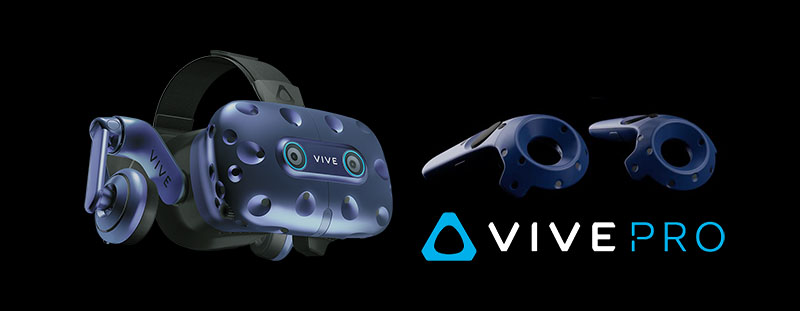Insight into the Value of Eye-Tracking
At Elara, we understand that an impactful and engaging Full Immersion VR experience requires the appropriate hardware to support it. Discerning which headset is right for your Virtual Reality solution is not an easy task. With over 100 different VR headsets out on the market today, narrowing your options down can feel overwhelming. From compatibility requirements to cost and logistics, navigating this XR space requires an extensive knowledge of the available technology. As a leader in Virtual Reality development and deployment, Elara possesses a vast amount of experience respecting the broad spectrum of VR headsets available. In this article, we’ll provide insights into the value of eye-tracking and compare two specific headsets, the HTC Vive Pro Eye and the Pico Neo 2 Eye. While both are optimal choices for integrating eye-tracking, determining which headset works best for your experiences requires an understanding of their differences.
As a Strategic Creative Agency our VR developers are always looking for new technologies to improve upon existing Virtual Reality systems. Eye-tracking is a valuable resource within this space, allowing developers to utilize the user’s natural vision to further augment their user experience. For example, the process of interacting with a key object could be prompted by the user’s gaze, keeping complications with hand controllers minimized and user-retention focused on what matters most.
Eye-tracking’s utility doesn’t stop there. In addition to reducing a user’s dependency on their hand controllers, it also provides developers with a unique avenue for data analysis. Tracking a user’s vision throughout an experience is an invaluable asset when compiling heat maps and essential user-retention metrics. These analytics can be gathered to ensure a positive user experience, perform market research, and offer a unique insight into how users are spending their time within the experience. Our team at Elara has tested the functionality of countless VR headsets, and has narrowed the list down to two best-in-class eye-tracking headsets. While each provides the gold standard in eye-tracking technology, we are here to help you determine which headset will be best suited for your business.

The first headset we examine is the Vive Pro Eye. With models starting around $1599, the Vive Pro Eye ranks amongst the highest quality VR headsets on the market. Its hefty price tag spares no expense, offering top of the line features across the board. The headset’s only true limitation is a lack of portability, which shouldn’t be a pain point for those looking to utilize the Vive Pro Eye in singular, established settings. However, it does require extensive preparation time due to users needing to place mounted tracking devices around the perimeter of the headset, and subsequently connecting the device to a high-end computer to power the experience. While the maneuverability factor can sneak up on first-time buyers expecting seamless transport, VR veterans might see it as little more than a minor pain point. If you’re looking for the best sedentary, high-end solution to eye-tracking supported VR, look no further than the Vive Pro Eye.

On the other side of the spectrum, the Pico Neo 2 Eye is our choice for a portable, flexible solution. Starting at $900, it stands out amongst the crowd as the most affordable eye-tracking headset on the market. While many mobile headsets lack the same screen fidelity offered by higher-end models, the Pico Neo 2 Eye does not sacrifice visual clarity for cost, offering a clear and comfortable viewing. A huge element to look out for in all mobile headsets is the ability to ‘tether’ to high-end computers, taking advantage of external computing for better performing VR. The Pico Neo 2 Eye can connect and digitally stream from computers, offering a level of flexibility that the Vive Pro Eye cannot. Between the two options presented, this headset is best suited for VR experiences where flexibility in deployment is crucial, or for VR experiences that do not require high-end computing.
Between user experience, hardware features, varying costs, mobility, and compatibility requirements, figuring out which components are vital to your Virtual Reality experience can feel fairly daunting. However, due to our experience with the different headsets available, we can always steer you in the right direction. As a leader in Interactive Solutions, Elara is constantly evaluating the latest and greatest hardware in an effort to ensure stunning and effective digital content. If you are interested in hearing how we can bring your ideas to life, allow our expertise to become yours, and contact us today!
